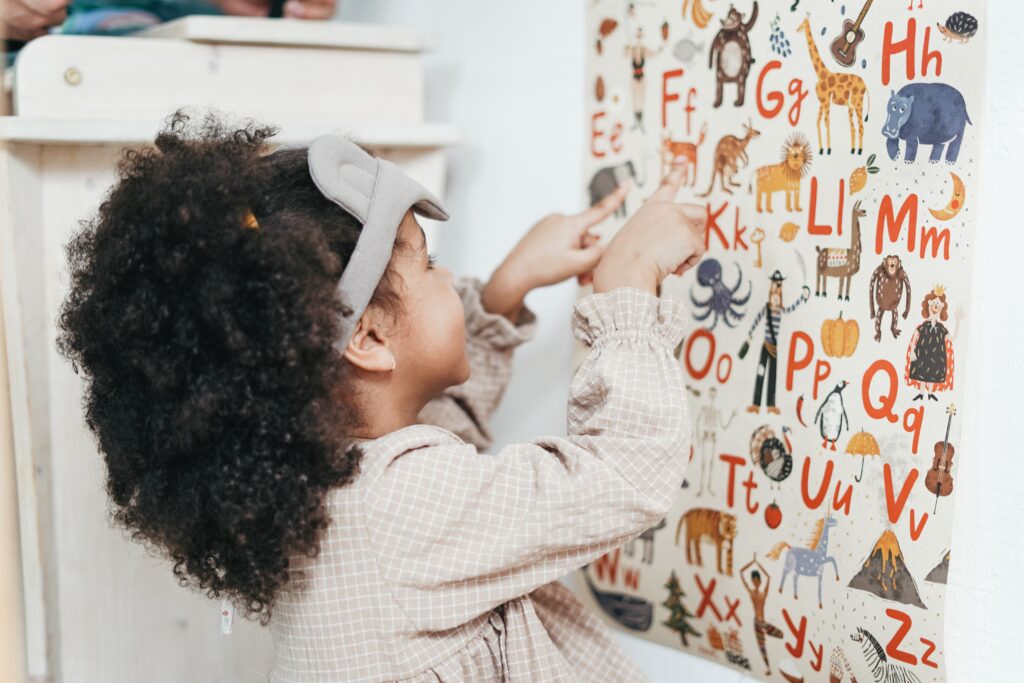There is no denying that early childhood education is essential as it helps in the development of their social, emotional, and cognitive needs to develop a strong foundation for lifelong learning.
However, it’s very important that your little one can understand you effectively to ensure you can instill wisdom in their young mind.
For that, they must have a reasonable grasp of the English language. Teaching phonics is the best way to help them improve their language skills. Most parents struggle to teach phonics to their children.
Hence, we’ve decided to introduce a series of blog posts to help you teach phonics to kids in a fun and interactive way!
So, without any further ado, let’s get started. But first, let’s briefly discuss phonics and then move on to how you can teach your kids to differentiate between different sounds.
WHAT ARE PHONICS?
Phonics is a way of teaching little ones how to read and write. We know the English language has 26 alphabets, but it also has 44 sounds called phonemes. Each letter or a group of letters have distinctive phonemes. It’s important to teach children to blend the letter sounds together to help them pronounce the words correctly.
Now that we’ve got the basics covered, let’s focus on the key part of phonics, the grapheme. It refers to a letter or a number of letters representing a phoneme or the sound in a word. Graphemes help kids spell a word when they have a better understanding of letters and their sounds.
Let’s start with a simple word ‘mat’; it’s a one-letter grapheme where the sound /m/ is represented by the letter m. In the word ‘similar’, there are words with 2, 3, and 4 letter graphemes. For our next example, look at a 4-letter grapheme`. Consider the word rough. Here, the sound /oo/ is depicted by the letters ‘o u g h’.
ALPHABETS AND ITS SOUNDS OR PHONEMES
Now that we’ve learned about the different aspects of teaching phonics to children, it’s now time to look at the alphabets with their sounds.
Alphabets | Sound of the alphabet | Phonemes | Examples |
A or a | ay, ā-ee (long a to long e) | æ, ā, ah, ā-uh, uh | cat, all, and, ant |
B or b | Bee | Buh | Bat, bike, bite, ball |
C or c | See | Suh and Kuh | Cake, cat, cap |
D or d | Dee | Duh | Dog, did, dear, dig |
E or e | Ee | Ee, eh | Egg, bed, end, free |
F or f | Eef | Fuh | Fish, frog, fed, fog |
G or g | Jee | guh, juh | glad, large |
H or h | ā-ch | Huh | Hotel, hen, horse, hut |
I or i | ah-ee | ah-ee, ĭ | Sit, it, bit, light |
J or j | Jay | juh | jump |
K or k | Kay | kuh | kite |
L or l | El | luh, ul | lot, full |
M or m | Em | muh | mother |
N or n | En | nuh | nest |
O or o | ō (oh) | ah, ō, uh, oo, ů | hot, slow, computer, fool, good |
P or p | Pee | puh | put |
Q or q | Kyoo (kyū) | kwuh | quick |
R or r | Ah-r | ruh, ur | race, stir |
S or s | Es | suh, zuh | stick, is |
T or t | Tee | tuh, duh | table, better, mountain, interview, hot |
U or u | Yoo (yū) | uh, yoo, oo, ů | up, use, flute, full |
V or v | Vee | vuh | very |
W or w | Dubōyoo | wuh, silent | well, slow, swell |
X or x | Eks | ks, zuh | box, xylophone |
Y or y | Wah-ee | yuh, ee, ah-ee (i), ĭ | yes, happy, try, cylinder |
Z or z | Zee | zuh | zebra |
SOME HANDY TIPS AND IDEAS FOR TEACHING PHONICS TO KIDS
- Don’t teach your kid phonics in normal alphabet sequence. Instead, start with the sounds that are easier to learn like a, b, c, d, g, h, i, k, m, o, t, q, w, x, and z.
- Find interactive videos on YouTube to help your kid learn phonics in a more fun and interactive way.
- Don’t teach alphabets that look similar at the same time as their young mind can get confused easily. For instance, avoid teaching the letter ‘b’ and ‘d’ or ‘p’ and ‘q’ together.
- Use separate flashcards and use phonemes to help them recognize the sound associated with a particular alphabet.
- Get plain white paper, write giant colorful alphabets on them, and add a picture to the sheet to associate it with the letter and the sound.
- Use colorful paper and cut out alphabets to ask your child to recognize phonics. It’s a great way to engage them in learning.
Understanding phonics can be tricky, and a little patience and perseverance can go a long way! Just hang in there, be patient, and calm. We have also given you a detailed chart with easy to understand phonemes and other sounds of the alphabets that you can use to teach your little one. Stay tuned to Mommytutors for our next line of exciting ways to learn how to read!
Meanwhile, check out the worksheets on our website. We have a variety of beautiful worksheets for kindergarten, including literacy worksheets, numeric worksheets, and shape and color worksheets, as well as preschool worksheets. Do you have something interesting to share with us? Write to us at mommytutors@gmail.com.



